Yonder: The Cloud Catcher Chronicles was announced at the Sony PSX event late in 2016. It is an open world game created by Australian studio, Prideful Sloth. What sets Yonder: The Cloud Catcher Chronicles apart from many other games is its focus on non-violent gameplay. It is a game about wonder and discovery with elements of crafting, collecting, farming, and questing. What also sets it apart from many other game development projects is that I was approached to start discussions about the audio before the team even went into full production. This gave me the time to carefully design, craft, and implement the audio into the game as it was developed. In many ways this is the dream workflow for audio folks and, as a result, it has allowed me to be quite ambitious in what I have planned for the sonic elements of the game.
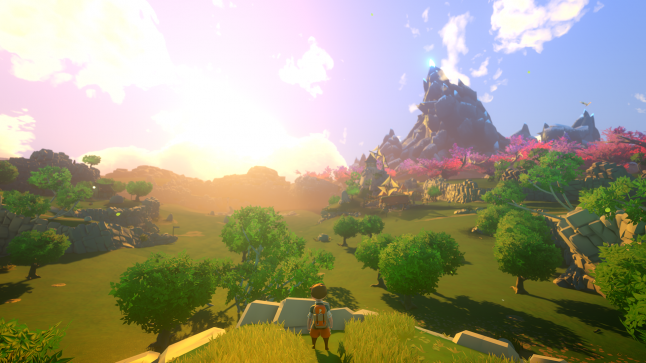
This is the first in an ongoing two-part series that describes the journey of building a world and telling a story through sound and music.
All Great Journeys are Risky
In many ways, I feel like the production of the audio for Yonder: The Cloud Catcher Chronicles has emulated the journey of the main character. An exciting beginning full of promise, but almost instantly there are risks to be dealt with. The game immediately appealed to me from the first demo I was sent, but at the time I was extremely busy so I hesitated to commit straight away. What tipped me over the edge was when we realized that the music style the developers were after was aligned perfectly with the style I myself wanted to explore. Lovely, innocent “Ghibli Style" musical accompaniment.
After the initial excitement of having an opportunity to create this type of score, I started to realize the magnitude of the task. “Ghibli Style” was not just a descriptor, it was an obligation. I had just said yes to trying to build a musical world to the very highest standard there is for musical narrative.
So, I had taken my first step on my risky quest: I had accepted the call and agreed to try and capture the spirit and wonder of one of my favourite styles of music, but also a style that everyone was familiar with and loved. What could possibly go wrong?
Next, was the decision to make Yonder: The Cloud Catcher Chronicles, the very first project that I would develop using the Wwise audio toolset. I had been meaning to work with Wwise on a full project for quite some time. It had certainly been well spoken of by many audio folks but, more importantly, I was really inspired when I looked at all the dynamic and interactive game music; it was all created in Wwise. So this was about looking at incredible examples of dynamic music such as PopCap’s Peggle 2 and PlayDead’s Limbo, and working out the “what” and “why” of how they were successful. If we had not started the discussions about audio so early in the process, this would never have been possible. I needed to design the entire audio for the game and then create all the SFX and music assets, so having to learn a new toolset as part of this was no small thing. What it did do was let me explore my ideas and just “see if they would work.”
My next challenge was finding the right workflow for creating music. Prior to this project, I had actually been away from straightforward composition for a few years. Between crazy interactive music projects, creating sound effect libraries and educational material, and doing major research into VR and AR, it had been close to ten years since I had needed to produce a full traditional style score for a game project of this scope.
I had been using an old version of Cubase and some very old Kontakt sample libraries, all of which needed to be updated. In many ways Yonder: The Cloud Catcher Chronicles has been an excellent project to force me to renew my entire approach to this aspect of production. I am used to being a one-person audio department, but each project we work on as audio designers can vary so much that you can work for a decade on multiple projects and use very different skill sets over that time.
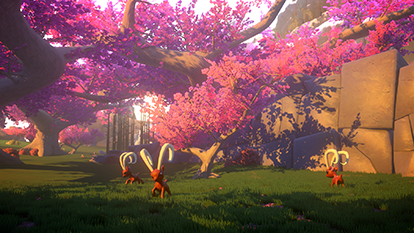
Rounding up the list of risks I was facing, I also needed to get myself comfortable with Nuendo 7 and the complete Spitfire Symphonic sample collection. The reason why I am specifying all the programs I am using is to make it clear the level of risk I chose to undertake. All the programs and tools I chose were top in their field, but this also meant they were very deep and often very complex. Choosing to use this many new tools was a significant risk, but it was a risk I was able to manage. A large part of my success here was the excellent support I got every day from the Prideful Sloth team. This brings us to my first really important point of this journal.
Risk Is Not Always Bad
Risks are what make us succeed in creative or artistic endeavours. Everything we do is a risk. It is not about avoiding risk, it is about dealing with risk. An experienced, supportive team, working on a well-planned project can take risk and turn it into reward. If you avoid risk completely, odds are you will produce something mediocre. In this case, I chose to take several risks because I considered the project really deserved for me to be working outside my comfort zone. A measure of blind terror can be a good motivator sometimes. But I chose to take these risks because I had confidence in the team that was supporting me.
This did not mean we had no issues. Several of the first pieces of music I wrote were thrown out completely. Initially my composition style was far too Disney and not enough Ghibli. I took a while to trust my new sample libraries and realize I could write music I would never previously have dreamed of writing because the older libraries simply were not up to it.
The last risk I chose to take was to create a dynamic score, where the music would alter to suit various world states. As I mentioned earlier, games such as Peggle 2 and Limbo had utilized interactive music and sound to such excellent results that I wanted to do more than just add background music. This process would develop as the game developed. I soon discovered I could not possibly apply the same level of interactive control that Peggle 2 had utilized. Yonder: The Cloud Catcher Chronicles is an open world game with multiple biomes, a day-night cycle, a season cycle and dozens of quest states. More importantly, I was one person trying to create all the sound and music.
This meant my initial goals had to be adjusted. I had to balance the ambition of a super dynamic system with the reality of the workload and timeframe I had available to me.
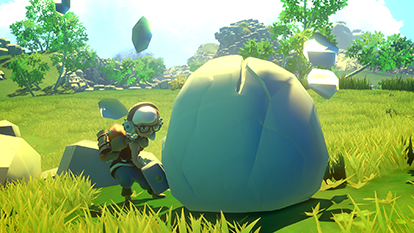
As development progressed, I composed music and experimented with various implementation methods within Wwise. I have always found the Wwise interface to be not so intuitive, so I had to devote significant time in just trying to understand what I could do and how to do it. I have no idea if my approach to certain implementation challenges is the “correct” approach or even the most efficient, but as with most things the end result is what is important.
One huge advantage that I had is that there is no single correct way to do things in Wwise. The series of tools provides a huge range of options that can be utilized however best suits a project. I think my lack of knowledge for the program may have been as much of an advantage in this case as it was a disadvantage.
I also found that my initial issues with understanding the UI were very quickly replaced with an enjoyment of discovering how powerful the tool-system was. Each set of functionality provided some really serious options and potential implementation approaches. This meant I could focus on a small area of functionality and get really interesting results. As I started to implement the musical content, I did so utilizing various different approaches depending on what I was trying to achieve.
The opening scene of the game is a short, mostly linear experience that introduces the narrative. For this, I recorded a live musician playing strings and then cut up this single piece of music into chunks. The idea being that this piece tracked the overall linear progression of the opening narrative, but could be divided into a few sections which could both loop cleanly and seamlessly transition to the next chunk.
Within Wwise I used the Transitions functionality to jump to each chunk at the appropriate time. This was done by creating a series of States within the game that were triggered as the narrative progressed. Our programmer created a control system we called MusicMan. For the opening, these state changes were either triggered as time passed or if the player performed an action that progressed the narrative. What was interesting about this was that the state system allowed us a great deal of flexibility, so what started as a basic linear progression system would later be adapted to control many other musical states.
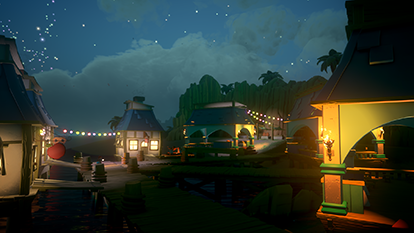
Next, I decided to add a series of musical stings. These were short musical events that would accompany game events such as completing a quest, feeding an animal or triggering some of the magical objects in the world. Initially I was concerned with how to blend these stings with smooth transitions. The complexity of a game like Peggle 2 had transitions that seamlessly accounted for key changes with aligning musical tempos. But a vast open world like Yonder would make that extremely difficult. I had so much music planned for this project that there was no way I could account for or predict what key the music might be in at any time. This was also true for the number of different tempos that might be involved.
Initially I just wanted to see if the stings would even sound appropriate, so I treated them more like sound effects. When Event X occurs, trigger Stinger X. To avoid any clashes with the music playing at the time, I placed the main musical content into its own mix bus and then the stingers into a second isolated mix bus and applied a channel ducking function. So anytime a musical sting was triggered the mixer would simply drop the volume of the main music immediately, allow the sting to play and then slowly over 2 or 3 seconds raise the main music back up. This was done initially just to test the suitability of the stings, but the system worked so well that I adopted it as the solution for the musical sting situations in the whole game.
Don’t Overthink It
This leads us to my second major point. We can often spend more time than we need to discover good working solutions for problems. Often a simple solution can be the best way to progress. Reflecting on how I designed the dynamic music system for Defect SDK, I think in all honesty I over-engineered many aspects of that design. It might have been clever, but often it did not need to be.
In Yonder: The Cloud Catcher Chronicles I was achieving some very effective dynamic musical solutions with some fairly basic functionality.

Designing Something Different
The last point I will make in this episode was the impact on both the sound design and music of working on a game with no combat. I was already very happy to be working on a “different” style of game. It is still quite rare for games to replace the basic combat mechanic with other forms of primary gameplay. Combat has become such a central game mechanic for our industry that we often struggle to find appealing concepts for games that do not involved physical conflict. From an audio point of view there was one very significant aspect to replacing combat with more creative game mechanics. I had so much more dynamic range in the mix than I have ever previously had to work with.
Combat sounds are loud, and they also occupy a very broad range of the frequency spectrum. Gunshots and explosions often have super low frequency content all the way through the spectrum to super high frequency content. In Yonder: The Cloud Catcher Chronicles I had space and I had silence. The weather system gave me the chance to create a variety of wind sounds that surrounded the player and changed according to the biome. This means if the wind picks up even slightly whilst playing in a grassland biome, you can hear the grass blowing across the meadows. In contrast, when you are in the forest you hear the sounds of the leaves moving in the wind.
Being able to do this made me incredibly happy as it was the subtlety of natural sounds like this that so inspired me in Limbo. Having the opportunity and an environment appropriate for subtle sound design has been a wonderful experience. This also meant that the music could be presented as a whisper as well. So at night time the world is very sparse, with light airy sound effects and musical content that gently accompanies the traveller.
In the next episode, I will go into more detail about the environmental sounds for the world of Gemea and explore how we have brought an open world to life.
This article was originally published on Gamasutra


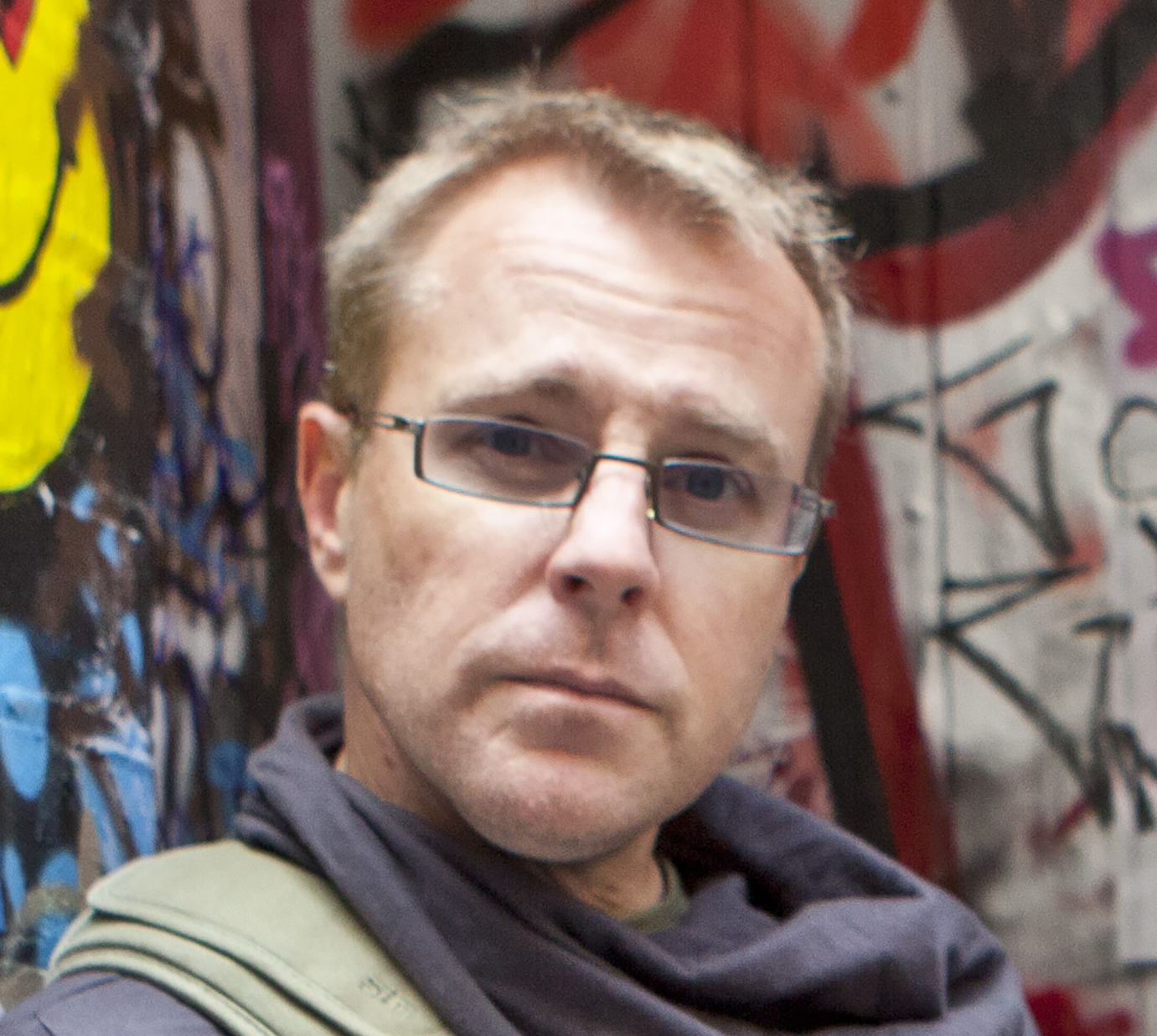
Comments